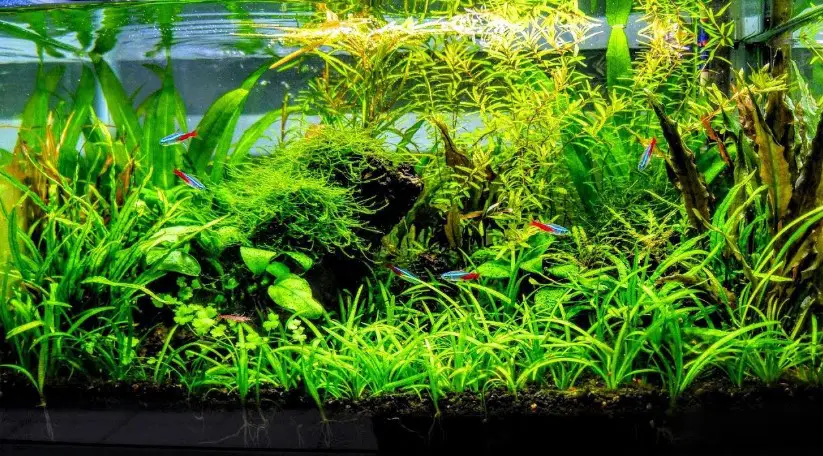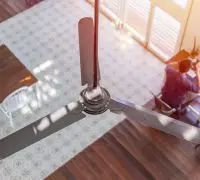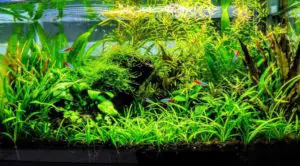Plant aquariums come with specific needs when it comes to filtering performance and equipment than a regular tank with fish stock. Scroll down to understand why it is so.
Page Table of Contents
Why is the circulation important in a planted aquarium?
The flow in a planted tank has to be active so that it provides nutrient transport for the provision of the plants. You need to learn about the circulation rate of the filter for your planted aquarium, especially if it’s in liters per hour. You need at least a triple circulation of the primary capacity of your tank per hour. To give you an example, a 54-liter tank needs to be circulated three times per hour, so the pump capacity should be 162 liters per hour (to say the least).
Keep in mind that the manufacturer gives some hints on the ideal conditions, which is why you should raise the value for some reserves. Muck and dirt are going to collect in the filter, but also in the inlets/outlets, and in the hoses, which is going to affect the flow and the stream.
The content of your planted aquarium counts a lot with the bushy plants, high structures, or the hardscape impacting the circulation inside your planted aquarium.
Check the filter materials!
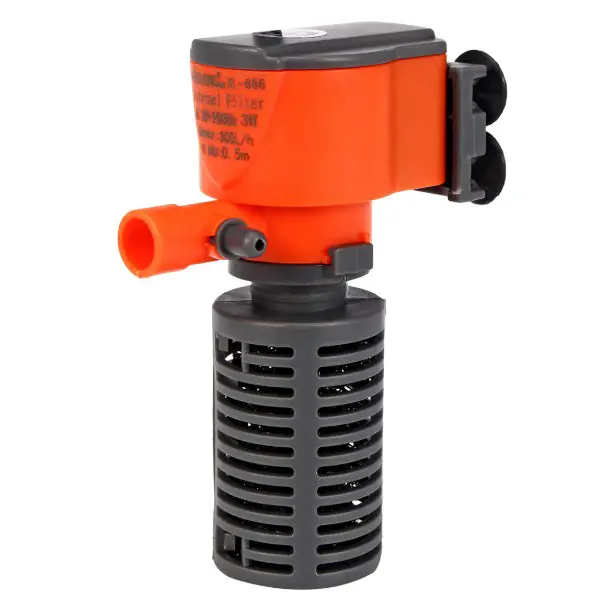
The diversity of filter media is incredible, with the mechanical, biological, and chemical filters as most important categories.
The mechanical filter takes care of the suspended particles, and you can find it as sponges, fleece, or cotton.
For the biological filtration, the bacteria colonize the filter materials and break down particular substance in the water during their activity.
As for the chemical filtration, particular materials impact the water during a chemical process, binding the unwanted substances. Activated carbon and phosphate absorbers are filtering materials of this sort.
Almost every time you’re buying a new filter, various materials are already included. Keep in mind that not all of them may work for your planted aquarium, and some can even lead to unwanted effects.
Is high-performance filter media an option for a planted aquarium?
High-performance filter media present a large surface area so that the bacteria can settle. It’s typically made with porous materials (plastic balls, ceramic, sintered glass). You can use it for controlling and lowering the collect of water with nitrogen compounds. The principle is, in fact, biological filtration.
If you have high fish stock in your aquarium, you should consider using high-performance filter media. Don’t use it in a planted aquarium as it’s sparsely populated with fish and the surface in the tank is enough for colonization areas for the nitrifying bacteria (it’s only an example). When you’re enlarge the surface with the high-performance filter media, you may have to deal with unpleasant effects. It happens because essential nutrients are going to be broken down by bacteria and not kept as food for the plants inside the aquarium.
Many aquascapes are only using filters that are half or one-third filled with filter media, which is good for the water circulation as well.
Is the activated carbon important for the planted aquariums?
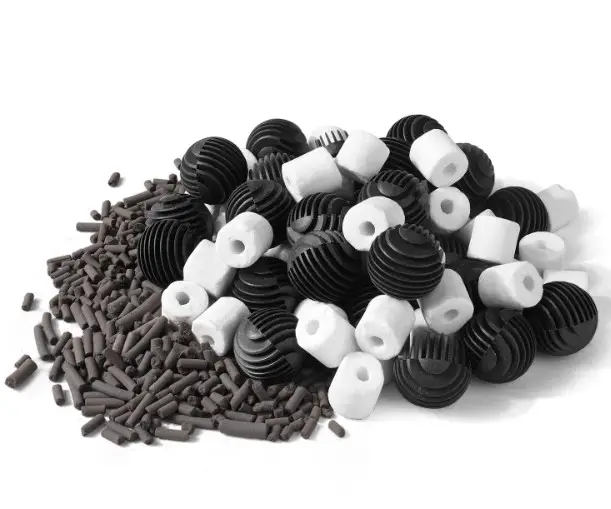
Liquid fertilizers are feeding the activated carbon, the way the plants need, but it’s not necessary to use it continuously. Activated carbon is going to keep the water clear, but it also binds metals that are crucial for the plants. The activated carbon eliminates iron and various trace elements that are included in a complete fertilizer.
Therefore, you should only use the activated carbon in specific situations and only for a short amount of time. It helps you get rid of the residues from the water when using medication for your fish, but that’s one example to keep in mind.
What’s the role of the surface movement?
There are good and bad things when it comes to an agitated water surface. It’s up to you to find the balance for your planted aquarium.
Here are the benefits:
- The moving surface works great with constant light sources (HQI lamps or LEDs), creating amazing light/shadow games (the curl effect we all want in a planted aquarium).
- Surface movement isn’t just nice, but it also reduces the risk for surface scum that the dust particles and bacteria films are causing. If your planted aquarium is open, a clean water surface is going to improve the whole aesthetics of your aquarium. You only need to turn the filter outflow upwards or use a skimmer.
- A strong movement is also going to lead to more oxygen in the water, which isn’t that important if you have high fish stock in the tank. If your planted aquarium is densely planted, the plants are going to lead to more oxygen content thanks to the photosynthesis.
There are some downsides for the surface movement, and you should consider them too:
- The evaporation is higher, especially for the open tanks. The tank loses water and you need to add a demineralized water (reverse osmosis is one option).
- The primary gas exchange leads to a decrease in CO2, which is a crucial plant nutrient. Therefore, you need it for the aquarium. The active movement of water lowers the entry so you should change the feed and improve the CO2 listing as such. Keep an eye on the CO2 content with a drop checker.
- Not all plants and fish like an agitated surface. Labyrinth fish (Betta) fancies a calmer surface as it’s essential for building the foam nests. This type of aquarium isn’t suitable for the floating plants either.
What’s to say about the intake protection?
Many planted aquariums (especially the nano type) are filled with dwarf shrimp or small species of fish. The tiny animals and their offspring need protection so that they don’t get sucked through the intake slots of the filter inflow. It’s why you should consider using filter guards. They match the majority of inflows with 13 and 17 mm in diameter. Buy the fine-meshed baskets that are made with rust-free stainless steel mesh; it’s easy to put over the intake pipe for a tight fit.
Since the pore size is small, a lot of gunk can collect on the filter guard, which is going to alter the suction. Needless to say, you’re going to have to maintain the filter guard clean regularly.
Other resources
Filtration in a plant aquarium – Aquascaping Wiki | Aquasabi
